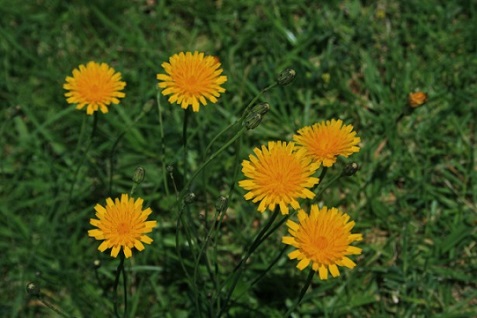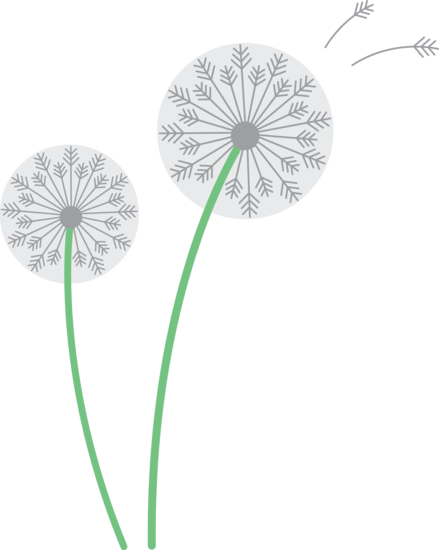The Clever Way Birds Use Dandelions For Building Their Nests
 Excerpt From:
Harper's Round Table, Volume 14
Source
I remember once finding a beautiful nest of a warbler whose outer wall was strongly woven with strands of milkweed bark, but the whole interior filled with a felt composed of dandelion seeds, and barely anything else. The nest was old and weather-beaten, and the mass had been reduced to a consistency resembling thick brown paper, with an occasional seed protruding. Originally this soft mass must have been at least a quarter of an inch in thickness.
Excerpt From:
Harper's Round Table, Volume 14
Source
I remember once finding a beautiful nest of a warbler whose outer wall was strongly woven with strands of milkweed bark, but the whole interior filled with a felt composed of dandelion seeds, and barely anything else. The nest was old and weather-beaten, and the mass had been reduced to a consistency resembling thick brown paper, with an occasional seed protruding. Originally this soft mass must have been at least a quarter of an inch in thickness.
The dandelion seed is an occasional ingredient in many nests. We can readily understand how a bird with an eye to a downy snuggery for her young might be tempted to gather an occasional seed, but it takes a host of dandelion seeds to make a thick cushion such as this which I have mentioned, and we might well wonder at the labor involved in the accumulation of such a mass.
A cloudy dandelion ball in the grass doubtless looks inviting to the nest-builder, but how much of this tuft would the bird be able to secure in her bill when a mere touch or breath perhaps is sufficient to scatter the ball to the breeze? No; I cannot believe my bird of the dandelion nest wasted her energies in picking up a single seed here and there from a dandelion ball, or perhaps on the wing. A discovery of a few years ago has shown me how dandelion seeds may be cleverly gathered by a shrewd nest-builder, and how a whole nest may be feathered with them without much labor.
For some years I was puzzled to account for a peculiar mutilation which I often observed on the dandelion. It was always at the same place—the calyx of the blossom— the green portion which encloses the bud, and after blooming, closes again about the withered flower, ami so remains while the seeds are growing. Most of my readers have seen dandelion flowers in all their stages of growth. The flower usually blooms for tliree mornings. By this time all the tiny yellow flowerets which make up the yellow cushion have bloomed. The green calyx now closes, to remain closed for a week, while the stem generally bends outward, and thus draws the withered flower toward the ground, often hiding it beneath the leaves.
During this week of retirement the stem continues to wither sideways, and the flower is busy ripening its seeds, each yellow floweret having a seed of its own, from which there grows a slender hairlike stalk with a tiny feathered parachute at its top. Gradually these little feathery ends push upward inside the calyx, and on the seventh day, lo! the withered dandelion has appeared again at the top of the grass. It now has a tiny brown cap at its top, or perhaps has just lost it, and gives us a glimpse of a white feathery tuft peeping from its top. This little brown withered cap is all that is left of the original golden blossom of two weeks before, now a shrivelled mass, which has gradually been pushed upward and out by the growing seed tuft. In another hour perhaps the calyx will again open, and bend down against the stem, while the bed at the bottom to which the seeds are attached will round upward through the feathers outward in the form of a ball. This rounded seed bed, or receptacle, as it is called in our botany, shortly withers, and the winged parachutes take flight at the slightest zephyr, whereas at first a smart breeze would have been required.
Now all this is by-the-way, for not every one understands how the dandelion ball is made. I know a little bird, however, who has found it out to her advantage. I have just alluded to a certain mutilation of this calyx which puzzled me. I have shown one of these calyxes in my title picture, at the right, one-half of it being torn off, and disclosing a cavity. Where are the seeds? "Ah! some rare caterpillar has done this," I exclaimed when I first observed the burglary. In vain I hunted among the leaves to find him. Again and again I found my rifled dandelion, but never a sign of the burglar. But one day I surprised him at his work. It was
no caterpillar, but a tiny black bird with a beautiful rosy band in his tail, and which'proved to be that butterfly among the birds, the redstart. I hardly knew what he was doing out there among the dandelions, and presumed he was after my mysterious caterpillar, until I chanced to see him alight near by with a white tuft in his bill. Yes, a tuft with feathery parachutes in a bunch on one side of his bill, and a compact cluster of seeds on the other.
In a moment I was among the dandelions from which he had flown, and soon found my empty calyx, from which an entire dandelion ball had been taken at one pinch. I lost no time in tracing out the nest in the foot of an apple-tree close by. A dainty fabric it was, exquisitely adorned with gray lichens and skeletonized leaves, its interior very plentifully lined with the seeds of the dandelion, more so than is usual with the nests of this bird. On two occasions since I have seen other small birds of the warbler kind suspiciously rummaging among the dandelions, and have afterward discovered the empty calyx. There is probably more than one dan~ delion burglar. Excerpt From: Harper's Round Table, Volume 14 Source [Dandelion Articles]


 Previous
Previous